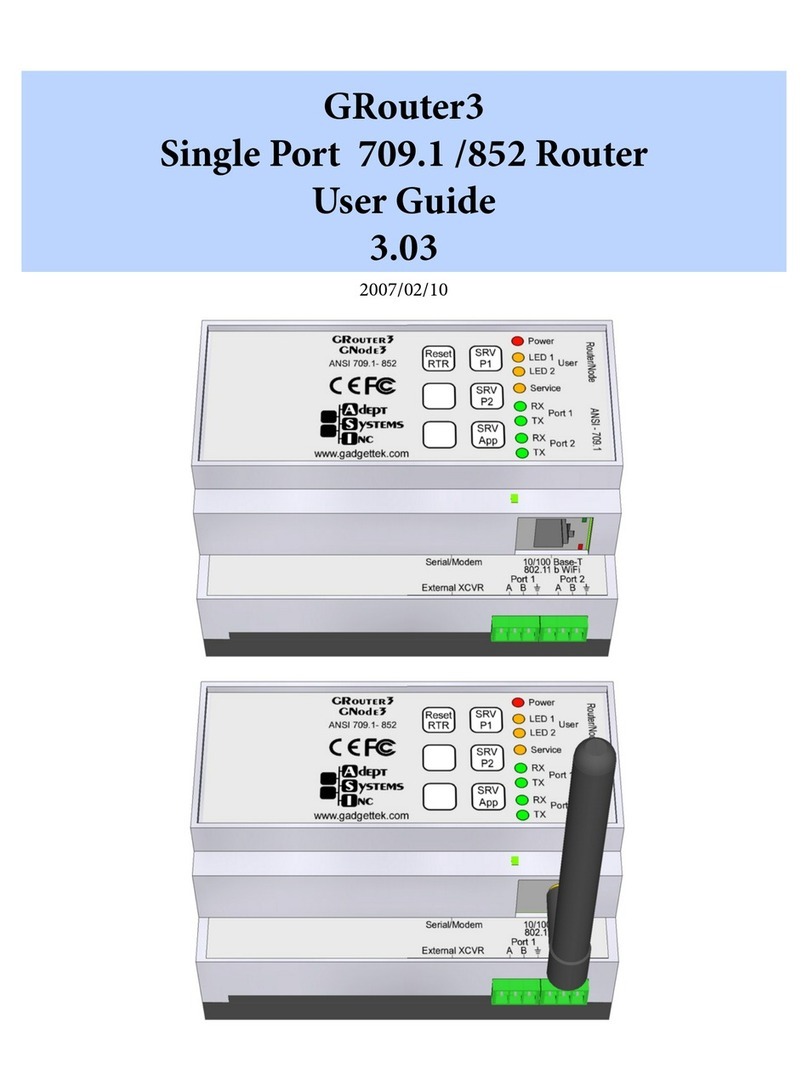
List Of Figures
Figure 1.1: Network Layers...................................................................................................8
Figure 1.2: Network Connector Types and Associated Layers...........................................8
Figure 1.3: CN to IP Router/Gateway Architecture............................................................9
Figure 1.4: GRouter 3 Architecture......................................................................................9
Figure 1.5: Multi-site building automation network with internet connectivity............11
Figure 1.6: Example Hybrid Network................................................................................11
Figure 1.7: Example WiFi Ad Hoc Network......................................................................12
Figure 1.8: Unicast ..............................................................................................................13
Figure 1.9: Multicast ...........................................................................................................13
Figure 1.10: Front terminal block detail with standard connector..................................16
Figure 1.11: Front terminal block detail with optional pluggable connectors................16
Figure 2.1: Ethernet setup with hub or switch ..................................................................17
Figure 2.2: Ethernet with direct connect crossover cable.................................................18
Figure 2.3: WiFi setup with access point and Ethernet connection to host computer ...18
Figure 2.4: WiFi setup with ad hoc bridge and Ethernet connection to host computer.19
Figure 2.5: WiFi setup with ad hoc WiFi card on PC........................................................19
Figure 2.6: WiFi setup with access point and WiFi card on PC .......................................19
Figure 2.7: User Name and Password Authentication ......................................................22
Figure 2.8: Status Page ........................................................................................................25
Figure 2.9: Status Page with Bridge and Twin Mode Enabled..........................................26
Figure 2.10: Router Setup Page ..........................................................................................29
Figure 2.11: Safe to Power Down Page ..............................................................................33
Figure 2.12: Unsafe to Power Down Page..........................................................................33
Figure 2.13: Time's Up........................................................................................................33
Figure 2.14: Reboot Page ....................................................................................................34
Figure 2.15: IP Setup Page..................................................................................................35
Figure 2.16: 709 Side B Setup Page Main Section .............................................................39
Figure 2.17: 709 Side B Setup Page Main Section .............................................................39
Figure 2.18: Subnet Forwarding Table...............................................................................41
Figure 2.19: Group Forwarding Table ...............................................................................42
Figure 2.20: Channel List Page...........................................................................................43
Figure 2.21: Channel List Page with Multiple Members ..................................................44
Figure 2.22: Channel List Page in Manual Mode ..............................................................46
Figure 2.23: Device Detail Page..........................................................................................47
Figure 2.24: Diagnostics Page ............................................................................................49
-5-




























